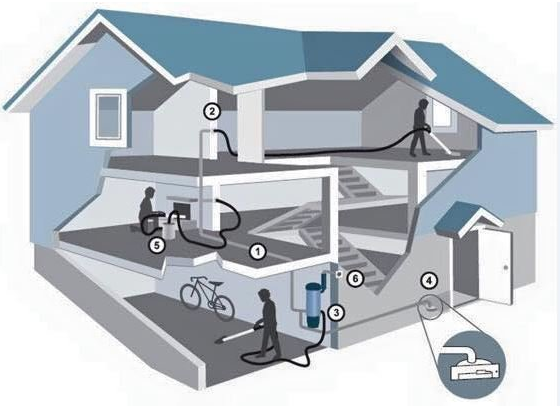A centralized vacuum cleaner, also known as a central vacuum system, is a built-in cleaning solution typically installed within a building or home. Unlike traditional portable vacuum cleaners, which are standalone units, a centralized vacuum system consists of a network of pipes installed within the walls and floors of the building, connected to a central power unit. The central power unit of a centralized vacuum cleaner is usually located in a utility area such as a garage, basement, or mechanical room. It houses a powerful motor and filtration system that generates suction and removes dirt, dust, and debris from the building's interior spaces. To use a centralized vacuum cleaner, users connect a lightweight hose to inlet valves strategically located throughout the building. These inlet valves are typically installed in walls or baseboards for easy access. When the hose is attached to an inlet valve and the system is turned on, the central power unit creates suction, drawing dirt and debris through the hose and into the network of pipes, ultimately depositing it into a central collection container or filtration system. Centralized vacuum cleaners offer several advantages over traditional portable vacuum cleaners. They provide more powerful suction, quieter operation, and greater convenience, as users do not need to carry heavy equipment from room to room or empty dust canisters frequently. Additionally, centralized vacuum systems often feature superior filtration, reducing allergens and improving indoor air quality. Overall, centralized vacuum cleaners are a convenient and efficient cleaning solution for homes, commercial buildings, and other spaces, offering powerful suction and enhanced convenience for maintaining cleanliness and hygiene.

